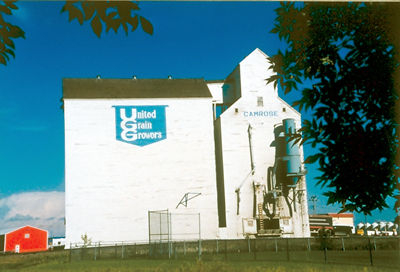Browse "Things"
-
Article
Governor General of Canada
Canada is a constitutional monarchy. As such, there is a clear division between the head of state and the head of government. The head of government is the prime minister, an elected political leader. The head of state is the Canadian monarch. Their duties are carried out by the governor general, who acts as the representative of the Crown — currently Charles III — in Canada. (Lieutenant-Governors fulfill the same role in provincial governments.) The governor general performs a wide array of ceremonial duties. They also fulfill an important role in upholding the traditions of Parliament and other democratic institutions. Inuk leader Mary Simon was formally installed as Canada’s 30th Governor General on 26 July 2021. She is the first Indigenous person to hold Canada’s viceregal position.
"https://d2ttikhf7xbzbs.cloudfront.net/media/media/b04c47d2-1e58-43a1-9c62-18239a9f8495.jpg" // resources/views/front/categories/view.blade.php
https://d2ttikhf7xbzbs.cloudfront.net/media/media/b04c47d2-1e58-43a1-9c62-18239a9f8495.jpg
-
Article
Governor General's Literary Awards
The Governor General’s Literary Awards are the pre-eminent literary prize offered for single works in Canada. They serve to reward Canadian writers and to publicize Canadian literature through the announcement of short-listed nominees and the awards ceremony each year. As of 2017, there were 14 categories, seven each in English and French, with a cash prize of $25,000 each. The publisher of each winning book receives $3,000 to promote it, and authors that are shortlisted as finalists receive $1,000.
"https://d2ttikhf7xbzbs.cloudfront.net/media/media/b92b7c2b-030a-4e8b-a2d8-11b69cff66a6.jpg" // resources/views/front/categories/view.blade.php
https://d2ttikhf7xbzbs.cloudfront.net/media/media/b92b7c2b-030a-4e8b-a2d8-11b69cff66a6.jpg
-
Article
Governor General's Performing Arts Awards
The Governor General's Performing Arts Awards (GGPAA) are Canada's foremost distinction for excellence in the performing arts. The Awards were created in 1992 by the late Right Honourable Ramon John Hnatyshyn (1934-2002), then Governor General of Canada, and his wife Gerda.
"https://development.thecanadianencyclopedia.ca/images/tce_placeholder.jpg?v=e9dca980c9bdb3aa11e832e7ea94f5d9" // resources/views/front/categories/view.blade.php
https://development.thecanadianencyclopedia.ca/images/tce_placeholder.jpg?v=e9dca980c9bdb3aa11e832e7ea94f5d9
-
Article
Governors General of Canada Since Confederation
Canada is a constitutional monarchy. The Crown is the head of state, and the governor general acts as their representative in Canada. The governor general has extensive ceremonial duties. They fulfill an important role in upholding the traditions of Parliament and other democratic institutions. Inuk leader Mary Simon was formally installed as Canada’s 30th Governor General on 26 July 2021. She is the first Indigenous person to hold Canada’s vice-regal position.
"https://d2ttikhf7xbzbs.cloudfront.net/media/new_article_images/GovernorGeneral/1200px-Flag_of_the_Governor-General_of_Canada.svg.png" // resources/views/front/categories/view.blade.php
https://d2ttikhf7xbzbs.cloudfront.net/media/new_article_images/GovernorGeneral/1200px-Flag_of_the_Governor-General_of_Canada.svg.png
-
"https://development.thecanadianencyclopedia.ca/images/tce_placeholder.jpg?v=e9dca980c9bdb3aa11e832e7ea94f5d9" // resources/views/front/categories/view.blade.php
https://development.thecanadianencyclopedia.ca/images/tce_placeholder.jpg?v=e9dca980c9bdb3aa11e832e7ea94f5d9
-
Article
Gradual Civilization Act
An Act to Encourage the Gradual Civilization of the Indian Tribes in the Province was passed by the fifth Parliament of the Province of Canada in 1857. It is commonly known as The Gradual Civilization Act. The Act was part of an effort to assimilate Indigenous peoples. It promoted the adoption of economic and social customs of European settler society.
"https://d2ttikhf7xbzbs.cloudfront.net/media/media/a042133-v6.jpg" // resources/views/front/categories/view.blade.php
https://d2ttikhf7xbzbs.cloudfront.net/media/media/a042133-v6.jpg
-
Article
Gradual Enfranchisement Act
The Gradual Enfranchisement Act of 1869 was a legislative measure passed by the government of the new Dominion of Canada. It attempted to control, regulate and assimilate First Nations people (referred to as “Indians” in the Act) in the country. This legislation followed An Act for the better protection of the Lands and Property of the Indians in Lower Canada of 1850 and the Gradual Civilization Act of 1857, passed by the Province of Canada (formerly Upper and Lower Canada). It preceded the Indian Act of 1876.
"https://d2ttikhf7xbzbs.cloudfront.net/GradEnfranchiseAct.jpg" // resources/views/front/categories/view.blade.php
https://d2ttikhf7xbzbs.cloudfront.net/GradEnfranchiseAct.jpg
-
Article
Grain Elevators
Grain elevators, which have been variously referred to as prairie icons, prairie cathedrals or prairie sentinels, are a visual symbol of western Canada. Numbering as many as 5,758 in 1933, elevators have dominated the prairie landscape for more than a century with every hamlet, village and town boasting its row of them, a declaration of a community's economic viability and a region's agricultural strength.
"https://d2ttikhf7xbzbs.cloudfront.net/media/media/ca7c03ab-8e7b-40ff-b6f4-3eae507eb411.jpg" // resources/views/front/categories/view.blade.php
https://d2ttikhf7xbzbs.cloudfront.net/media/media/ca7c03ab-8e7b-40ff-b6f4-3eae507eb411.jpg
-
Article
Grain Growers' Associations
Grain growers' associations are a group of farm organizations formed on the Prairies in the early 20th century. They developed in the wake of the Manitoba Grain Act (July 1900), which regulated railways and grain elevators in the interests of grain growers.
"https://development.thecanadianencyclopedia.ca/images/tce_placeholder.jpg?v=e9dca980c9bdb3aa11e832e7ea94f5d9" // resources/views/front/categories/view.blade.php
https://development.thecanadianencyclopedia.ca/images/tce_placeholder.jpg?v=e9dca980c9bdb3aa11e832e7ea94f5d9
-
Article
Grain Growers' Guide
Grain Growers' Guide, journal published 1908-28 for Prairie grain growers' associations. In 1928 it became the Country Guide, which is still published by the United Grain Growers in Winnipeg. Editors included E.A. PARTRIDGE, Roderick McKenzie and (1911-35) George Chipman.
"https://development.thecanadianencyclopedia.ca/images/tce_placeholder.jpg?v=e9dca980c9bdb3aa11e832e7ea94f5d9" // resources/views/front/categories/view.blade.php
https://development.thecanadianencyclopedia.ca/images/tce_placeholder.jpg?v=e9dca980c9bdb3aa11e832e7ea94f5d9
-
Article
Grain Handling and Marketing
There are approximately 120 000 grain-producing farms in Canada. Yearly production varies substantially, depending on climatic conditions. Grain production has doubled since the 1950s, with wheat making up a large percentage of production. In 1997-98, total Canadian wheat exports were 15.
"https://development.thecanadianencyclopedia.ca/images/tce_placeholder.jpg?v=e9dca980c9bdb3aa11e832e7ea94f5d9" // resources/views/front/categories/view.blade.php
https://development.thecanadianencyclopedia.ca/images/tce_placeholder.jpg?v=e9dca980c9bdb3aa11e832e7ea94f5d9
-
Article
Granby Song Festival/Festival de la chanson de Granby
Granby Song Festival/Festival de la chanson de Granby. Annual competition begun in 1969 in Granby, Que, by Yves Gagnon and Yves Steinmetz, to promote original Quebec song, provide amateurs with a permanent workshop, and encourage international exchange.
"https://development.thecanadianencyclopedia.ca/images/tce_placeholder.jpg?v=e9dca980c9bdb3aa11e832e7ea94f5d9" // resources/views/front/categories/view.blade.php
https://development.thecanadianencyclopedia.ca/images/tce_placeholder.jpg?v=e9dca980c9bdb3aa11e832e7ea94f5d9
-
Article
Grand Portage
Grand Portage was a fur-trade depot and route of the voyageurs at the western extremity of Lake Superior.
"https://d2ttikhf7xbzbs.cloudfront.net/media/media/a4d6e476-5e53-4126-9ee6-313b64235660.jpg" // resources/views/front/categories/view.blade.php
https://d2ttikhf7xbzbs.cloudfront.net/media/media/a4d6e476-5e53-4126-9ee6-313b64235660.jpg
-
Article
Grand Théâtre de Québec
Grand Théâtre de Québec. A building complex devoted to the performing arts, located in Quebec City at the corner of Claire-Fontaine St and René Lévesque Blvd E.
"https://development.thecanadianencyclopedia.ca/images/tce_placeholder.jpg?v=e9dca980c9bdb3aa11e832e7ea94f5d9" // resources/views/front/categories/view.blade.php
https://development.thecanadianencyclopedia.ca/images/tce_placeholder.jpg?v=e9dca980c9bdb3aa11e832e7ea94f5d9
-
Article
Grand Trunk Pacific Railway
The Grand Trunk Pacific Railway was a 4800 km system whose main line ran from Winnipeg via Melville and Edmonton to Prince Rupert, British Columbia.
"https://development.thecanadianencyclopedia.ca/images/tce_placeholder.jpg?v=e9dca980c9bdb3aa11e832e7ea94f5d9" // resources/views/front/categories/view.blade.php
https://development.thecanadianencyclopedia.ca/images/tce_placeholder.jpg?v=e9dca980c9bdb3aa11e832e7ea94f5d9
